Champions of Change Blog
A Better Way
Posted by on November 5, 2013 at 10:12 AM EDT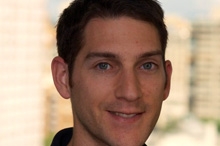
Avi Jacobson is being honored as a Veteran Advancing Clean Energy and Climate Security Champion of Change.
My career in clean energy began with silence.
The most disruptive sound on our Special Operations Task Force’s compound in Iraq was not the occasional mortar attack. It was not the controlled detonation of bombs, shells, and assorted unexploded items that were found on the old battleground that was our home. It was not the firing range or the fighter jets on full afterburner overhead.
The most disruptive sound on our secure compound was deafening silence: the sudden quiet of our diesel generator being overloaded and shutting down during the hottest part of the desert summer day. Critical communications systems were running on emergency backup batteries or not running at all. The lack of energy planning directly impacted our ability to operate.
Even when the generators ran smoothly, the reliance on diesel fuel detracted from our combat readiness. Maintaining a steady fuel supply depended on expensive airlifts and dangerous truck convoys. The dollar costs of sustaining such a complicated supply chain are high. The cost in lives of those wounded or killed on resupply missions is painful to contemplate. The burden of having to dedicate so much of our fighting force to convoy security is maddening.
Beyond power considerations, burning trash in open pits for most of the war not only subjected our troops to harmful toxins but also produced thick smoke, reducing runway visibility. This was yet another way resource management choices directly impacted the battlefield. Another was the large number of troops evacuated due to back and knee injuries from carrying heavy loads, often including batteries.
There had to be a better way and I wanted to find it.
For the military in Afghanistan and Iraq, an unconventional battlefield with no clear battlefront undermined the assumptions underlying our energy planning, as did the unexpected need to maintain and operate temporary forward operating bases for extended periods of time. And here at home, increased competition for resources as globalization lifts billions out of poverty, aging energy infrastructure, and the increasing risks of climate change are all forcing us to face the costs of our current energy system.
Through the Office of the Assistant Secretary of Defense for Operational Energy, the military is making great strides in improving energy management in deployed locations. Similarly, stateside military bases are diversifying their power sources and integrating more local renewable energy to ensure resiliency in the face of disaster.
At the Washington State Housing Finance Commission, I am working diligently to solve these society-wide problems of resource management. We have grown the Commission’s Sustainable Energy Program into a clearinghouse of information that benefits everyone from the earliest-stage Cleantech Open competitors to sophisticated Energy Services Companies. Our bond financing tools were recognized at the 2013 Better Buildings Summit as a model of public-private partnerships.
The Commission’s focus is on developing and facilitating financing models that enable clean energy technology deployment. We realize that sustainable energy requires a sustainable business model and access to capital. With a focus on the market’s demands, the Commission is driving scalable solutions for a clean energy economy.
Successes belong to your troops; failures are your own. This axiom of leadership was repeated throughout my training as an officer in the United States Air Force. It is especially poignant as I am being honored as a Veteran Advancing Clean Energy and Climate Security Champion of Change. The accomplishments for which I am being recognized – whether supporting Special Operations Forces in Iraq or facilitating the financing and deployment of clean energy projects here at home – have truly been team efforts.
Avi Jacobson is the Senior Sustainable Energy Coordinator at the Washington State Housing Finance Commission.
Learn more about Energy and EnvironmentGreatest Generation Grandparents Inspired My Passion for Energy Efficiency
Posted by on November 5, 2013 at 10:09 AM EDT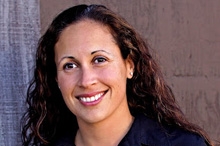
Andrea Marr is being honored as a Veteran Advancing Clean Energy and Climate Security Champion of Change.
My grandparents were green before green was trendy. They had a solar hot water heater on the roof of their home and a garden where they grew most of their vegetables. My grandfather built a sunroom attached to the house, and during winters in Colorado they had only to crack the door of the sun room and warm air heated by the sun would flow into the living room. They lived in a suburb very much on the grid, but embraced self-sufficiency as much as they could. The modifications they made to their home and the way they lived saved them money, utilized less energy, and improved their quality of life.
I grew up instilled with this notion of conservation, but I have more in common with my grandparents than that. They both served in the Navy during World War II – my grandmother as a yeoman, my grandfather as a pilot. Like them, I wanted to serve my country; eventually I too joined the Navy.
I loved the military and completed five years of service before retiring, confident there was another way I could contribute to our great nation and have an impact: by promoting clean energy.
We stand at an incredible moment for clean energy. Solar is on the verge of grid parity – by 2017, the cost of solar in the U.S. will be truly competitive. Wind energy has the capacity to power over 15 million homes and that number is rapidly increasing. But we also have a huge opportunity to reduce the amount that we consume, opting for smart technologies and common sense approaches to energy reduction. As a nation, we have the chance to emulate my grandparents by using less energy and saving money while improving our lives.
In the last year my work has focused largely on educational facilities, from middle schools to universities. I’ve discovered auditoriums with the lights and air conditioning left on for the entire summer following graduation. I’ve found classrooms where kids are getting less fresh air than recommended and places where the A/C is left on high but doesn’t work properly and never actually cools a room.
There is nothing political about energy efficiency. There is nothing overwhelmingly complex or risky about implementing measures that improve our homes and offices and create safer, more productive environments. Nationally we spend $32 billion dollars heating hot water in our homes; the installation of solar hot water heating alone could reduce the average household’s energy expenditure by half. It’s estimated that commercial office buildings waste 30% of all the energy they consume. That equates to energy we can avoid buying on the world oil market, savings in our pockets, and better environments in which to live.
It’s not about being green for green’s sake. It’s about the future we want to create and the opportunity to exercise American leadership to make us self-sufficient in the best sense of word – in a way my Greatest Generation grandparents would respect.
Andrea Marr is a professional engineer and energy efficiency expert in California. She is also a member of the Truman National Security Project’s Defense Council.
Learn more about Energy and EnvironmentIn Honor of an Inspiring Group of Volunteers
Posted by on October 17, 2013 at 2:33 PM EDT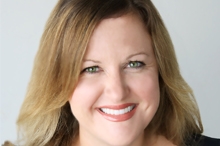
Ginny was recognized as a White House Champion of Change in Community Resilience and Preparedness.
Being selected as a White House Champion for Change is deeply humbling and a true honor, but it is impossible for me to accept this award without acknowledging the dedicated and inspiring people I am privileged to work with throughout the entire state of Texas. The nature and demands of community preparedness require a strong team of individuals who work together to ensure the safety of our communities, cities, regions and states when disaster strikes.
These individuals all come together to assist elected officials, community leaders and first responders whenever they are needed. Throughout the past eight years, I have had the privilege of working with a team of these dedicated volunteers and emergency preparedness professionals through the Texas Citizen Corps Program. It is on behalf of these dedicated individuals that I accept this award.
In my professional capacity, I work with 24 regional councils representing 254 counties and more than 268,000 square miles collaborating to enhance service and program delivery across the state of Texas. Due to her size, topography, diverse population and vast geography, coordinating effective and efficient programs and services can present a unique set of challenges. As a solution, Texas adopted a regional approach for preparing communities utilizing 24 regional councils of government—voluntary associations of local governments formed under Texas law to assess problems, planning needs, and the coordination of services that cross the boundaries of individual communities.
In Texas, Citizen Corps is one of the regional programs assisting communities to plan and prepare for disasters together to make their families, homes, and communities safer. The program is comprised of unbelievably dedicated and selfless individuals all with a heart to serve their neighbors. The members of Texas Citizen Corps are volunteers of all skill levels and backgrounds who come together to provide support to local fire departments, law enforcement officials, emergency medical service providers, and any community public health needs that may arise. Together we have faced wide-ranging threats of natural and mad-made events including: hurricanes, winter storms, significant flooding events, tornadoes, devastating wildfires, droughts, sand storms, extreme heat, and manmade hazards such as the recent events in West, Texas and Citizen Corps teams have been an integral part of community resilience.
The importance of communities coming together to create a plan for, respond to, and recover from any event affecting a group of people in a safe and organized manner cannot be underestimated. It is for precisely this reason that I feel so honored to work with a team whose mission is to assist regions and communities with those efforts.
To those volunteers who give tirelessly of themselves at the call of your communities, this award belongs to you. I hope you will accept my most sincere gratitude for standing by the citizens of Texas and this great nation in times of need. It is impossible to express how truly blessed we are by your willingness to serve.
Ginny Lewis is the Associate Director and General Counsel for the Texas Association of Regional Councils in Austin, Texas (TARC).
Grading and Preparing Chinatown
Posted by on October 17, 2013 at 2:31 PM EDT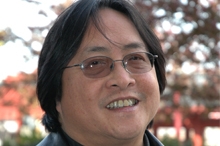
Norman was recognized as a White House Champion of Change in Community Resilience and Preparedness.
Growing up in San Francisco’s Chinatown, my family and I faced many challenges related to poverty and race. As a teenager, I had a lot of energy but didn’t always know how to channel it. I could have easily taken a more destructive path, but through a summer jobs program (EOC) at a Chinatown settlement house and church, I was provided with positive and constructive alternatives. This settlement house was working to preserve 186 units of housing at the corner of Stockton and Sacramento Streets—Mei Lun Yuen Apartments—which would become the first low income redevelopment project in Chinatown. I thought every church did this type of social advocacy work, which inspired me to become a pastor and influence community development in the future.
Returning home from school one afternoon my mother handed me a letter she had received. It was an eviction notice saying we would have to vacate in 30 days. Luckily, a member of the settlement house helped us find other housing. I was also present at the eviction of elderly tenants from the International Hotel in San Francisco’s Manilatown, protesting their forced removal from their homes. Today, at Chinatown Community Development Center we continue to fight morally indefensible evictions of seniors, disabled and low income residents, many who have lived in their homes for decades. For many residents in the San Francisco community and throughout the nation, the fear of not having a place to live is a very real and pressing concern. To this day, I still remember the look of fear in my mother’s eyes as we faced eviction and possible homelessness. As Executive Director at Chinatown CDC, I work to ensure that my family’s experience will never happen to anyone again, and to eradicate those feelings of dread, despair, and hopelessness from the Chinatown community forever. Chinatown CDC continues to build and rehabilitate affordable housing and we currently have about 2300 units of housing in our portfolio to date.
Shortly after I started as Director of Programs at Chinatown CDC in 1990, I went to back to my old high school (Galileo High School) and recruited eight youth who wanted to make a difference in Chinatown. Since they were being graded every day in school they decided to grade Chinatown’s alleyways and challenge the businesses to help clean up the mess. This led to the formation of Chinatown CDC’s Adopt an Alleyway program, where AAA youth organize, recruit, and lead peers in monthly neighborhood clean-ups and alleyway beautification projects. Relying on youth to define problems, design solutions, and recruit peers to take action is the model we have used to structure all of Chinatown CDC youth leadership development programs. The youth serve as Chinatown tour guides, perform outreach and support to seniors and families living in single-room-occupancy hotels, develop recreational activities and provide childcare at monthly Super Sunday town hall meetings and provide lifesaving disaster preparedness training to monolingual Asian immigrants residents of Chinatown.
Since 2009, our youth have been active in leading disaster preparedness trainings for residents living in SROs. Our many youth programs have had a tremendous impact on safety and quality of life issues in our neighborhood. I am honored to have played a part in this extraordinary cycle of growth and success which continues to blossom with each succeeding generation of Chinatown youth.
We are so proud of the residents and youth who have become champions of change not only for Chinatown but for San Francisco and beyond!
Rev. Norman Fong is the Executive Director of San Francisco’s Chinatown Community Development Center (Chinatown CDC).
Preparing for Those “Ugly” Choices
Posted by on October 17, 2013 at 2:28 PM EDT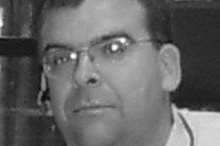
Scott was recognized as a White House Champion of Change in Community Resilience and Preparedness.
Being prepared is important for everyone, but it is especially important for people with disabilities, senior citizens, and people with unique needs
The Independent Living movement is based on the philosophy of people with disabilities having the right to control our lives. The right to make decisions about our needs, the barriers we face, and how to address those needs and handle those barriers. Along with those rights come the responsibilities such as planning and assuming the consequences of making choices--the good ones, the bad ones, and sometimes the ugly ones. An “ugly” choice can be choosing between sheltering in-place or evacuating with your power-chair to a general population shelter when a hurricane is bearing down on you.
Being prepared for emergencies and disasters is a logical extension of the Independent Living philosophy. Everyone needs to be prepared, but for people with disabilities living independently, it is a vital responsibility that they must make those “ugly” choices and be prepared for the consequences. Being prepared helps people with disabilities stay in control as much as possible during disasters because they have done a self-assessment. As a team, we know what our disability needs will be during most emergency situations. It is then up to us to plan for those situations so that we stay safe, in control, functional, and able to assist others around us, or help the responders trying to help us.
I want to say this again: People with disabilities can stay in control and functioning during a disaster or simple emergency if we have done our self-assessment, done our planning, gathered our resources, and executed our plans to the best of our abilities. That is a basic Independent Living stratagem and a basic Emergency Preparedness tool. Together these instruments empower people with disabilities to survive!
No plan fits everyone. This is especially true for people with different disabilities. This is where the Progressive Center for Independent Living (PCIL) comes in. We are a resource for any person with a disability, and we a resource for the Emergency Management community as well. We bridge that gap of misunderstanding and misinformation between the two communities. PCIL works extensively with first-responders through PCIL training courses. We include staff and board members with disabilities who are members of the Mercer County Community Emergency Response Team (CERT) who have been deployed for real-world emergencies such as flooding. As active responders, we operate in both communities for the benefit of all.
I started this by saying that I was honored that what I do every day is viewed in the Champions of Change context, but I view it more a as a firefighter. A task needs to be done to put out the fire and I’m doing that task, among many, to put out the fire.
Scott W. Ellis is the Emergency Preparedness Coordinator of the Progressive Center for Independent Living.
Catastrophic Preparedness.... Really?
Posted by on October 17, 2013 at 2:25 PM EDT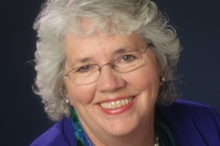
JoAnn was recognized as a White House Champion of Change in Community Resilience and Preparedness.
Getting people to think about and plan for an event that they hope will never happen is hard! Yet, for the past 20+ years, that's what I have been doing - teaching people how to prevent fires and prepare for disasters. The disaster message has been "be prepared to be on your own for at least 3 days," and over the years, we have seen statistics show that people have been gradually hearing our message and taking actions to be prepared.
For the past 2 1/2 years, I have had the great fortune of managing a Regional Catastrophic Preparedness Grant project that focused on motivating people to prepare for catastrophic events. Yes, bigger than an emergency, more powerful than a disaster, we are talking about catastrophic! Our dilemma: how to introduce the term "catastrophic" to the public without scaring them or causing them to feel so overwhelmed that they do not prepare at all.
The project team hired a marketing firm to help research how to motivate people to prepare for the unthinkable. We used focus groups to find out what would motivate people to take action to prepare for longer than three days and who would be the best to deliver the messages.
Armed with the information gathered, we set out to create a platform for introducing the concept that events that are bigger than disasters are happening more frequently and people need to be prepared to be self-sufficient for a minimum of 7 - 10 days. The name of the campaign, “What To Do To Make It Through” came from the concept of surviving - the strongest motivator from the research.
A web site was created that included videos of survivors telling their stories. The primary messages included "be prepared to be self-sufficient for a minimum of 7 - 10 days". We encouraged people to take three basic steps to prepare: Make a Plan, Build a Kit, and Help Each Other. These three steps and the order they are in was derived from the research too. There are many people in our area that struggle with feeding themselves and their families on a daily basis, so we put more emphasis on planning than stocking supplies. Building a kit is important so we included checklists and focused on cost effective ways to stock supplies. The third step is Help Each Other, which really resonated with the groups and translated well into multiple languages.
The campaign launched in April of 2012 with great success. The consultant helped us find retail partners to join the campaign and help fund TV and radio advertisements, electronic news, blogs and other social media advertising. We also advertised in ethnic newspapers and Spanish radio and TV. The pre/post surveys completed after the first year of the campaign showed we were on the right track. Our second year showed increases in almost all of the campaign benchmarks. We also received recognition from several media and marketing awards.
My biggest surprise was this: for the most part, people already knew that 3 days of preparedness was not enough; they have probably been ready for a change in message long before we were ready to deliver it.
JoAnn Jordan is the Public Education Coordinator for the Seattle Office of Emergency Management.
- &lsaquo previous
- …
- 36
- 37
- 38
- 39
- 40
- 41
- 42
- 43
- 44
- …
- next &rsaquo

